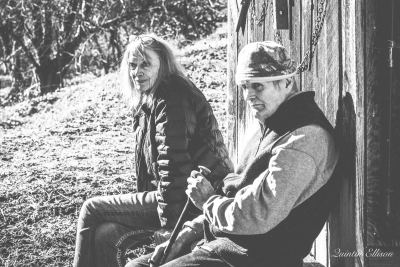Artist Elizabeth’s Journey: From Watercolors to Acrylics in the Smoky Mountains
There’s something magical about the way light filters through the mist in the Smoky Mountains, casting an ethereal glow that artists have tried to capture for generations. As someone who’s wandered these ancient hills for years, I’ve seen countless creators struggle with the challenge of translating this beauty onto canvas. Recently, I had the pleasure of learning about Elizabeth, a talented artist who made a pivotal decision in her creative journey that many mountain artists might find inspiring.
A Creative Turning Point in the Smokies
“I decided, no way am I going to do 80 new watercolors and frame them and transport them,” Elizabeth said. Works in oil and acrylic don’t need frames, and the finished canvas is light as a feather compared to the heft of a framed watercolor. Elizabeth decided to switch mediums for the upcoming exhibition, embracing a practical solution that would change her artistic expression forever.
This transition mirrors what many Smoky Mountain artists experience – the need to adapt their craft not just for artistic growth, but for practical considerations. The logistics of displaying art in our mountain galleries and exhibitions can be as challenging as capturing the perfect mountain vista at dawn.
Why the Medium Matters in Mountain Art
For artists working in the Smokies, medium selection isn’t just about aesthetic preference – it’s about practicality too. The region’s humidity, frequent rain, and transportation challenges along winding mountain roads all factor into an artist’s decisions.
Watercolors, while beautiful with their transparent quality (perfect for capturing mountain mist), require protective framing with glass. This adds significant weight and fragility – two things you don’t want when hauling artwork up and down mountain roads to various art shows and galleries.
Elizabeth’s switch to oils and acrylics solved several problems at once:
- Eliminated the need for heavy glass framing
- Reduced transportation challenges
- Decreased exhibition setup time
- Lowered risk of damage during transport
The Practical Side of Art in the Smokies
I’ve watched artists struggle to unload framed watercolors at the Gatlinburg Craftsmen’s Fair, carefully navigating their precious cargo through crowds. Elizabeth’s decision represents a practical wisdom that comes from experience – something I’ve seen the most successful mountain artists embrace.
When I hike the trails around Cades Cove in early morning, watching the fog lift from the valley, I often think about how different artists might capture this scene. The medium you choose shapes not just how you create, but how you share your art with the world.
| Medium | Framing Needs | Weight | Durability for Transport |
|---|---|---|---|
| Watercolor | Glass and matting required | Heavy | Fragile |
| Oils/Acrylics | Optional/minimal | Light | Durable |
Finding Your Artistic Path in the Mountains
Elizabeth’s story reminds me of conversations I’ve had with artists at the Arrowmont School of Arts and Crafts in Gatlinburg. The most enduring careers aren’t built solely on talent, but on adaptability. The mountain environment teaches this lesson constantly – weather changes in an instant, trails transform with the seasons, and successful artists learn to flow with these changes rather than resist them.
Have you been struggling with the logistics of your chosen medium? Maybe Elizabeth’s solution could work for you too. I’ve seen artists reinvent themselves many times in these mountains, finding fresh inspiration with each new approach.
Embracing Change in Your Creative Journey
What’s particularly striking about Elizabeth’s decision is that what began as a practical solution likely opened new creative doors. Different mediums invite different techniques, textures, and expressions. What started as convenience may have led to exciting new artistic territories.
Next time you’re driving the Blue Ridge Parkway, watching the play of light and shadow across the ridges, consider how different mediums might capture that beauty. And remember Elizabeth’s wisdom – sometimes the practical choice can lead to unexpected creative growth.
Your Turn to Adapt and Create
Whether you’re an established artist in the Smokies or someone who simply appreciates the region’s beauty, there’s a lesson in Elizabeth’s story about adaptability and practical problem-solving. The mountains have always rewarded those who can adjust to changing conditions while staying true to their vision.
The next time you visit an art gallery in Gatlinburg, Pigeon Forge, or any of our mountain towns, take a moment to consider the artist’s chosen medium and the story behind that choice. Every piece of art has not just a visual story, but a creation story – and sometimes those are just as fascinating.
Planning to exhibit your artwork in the Smoky Mountains region? Consider reaching out to local artists’ guilds for practical advice on transportation and display options suited to our unique environment.
Source: Smoky Mountain Art Association

